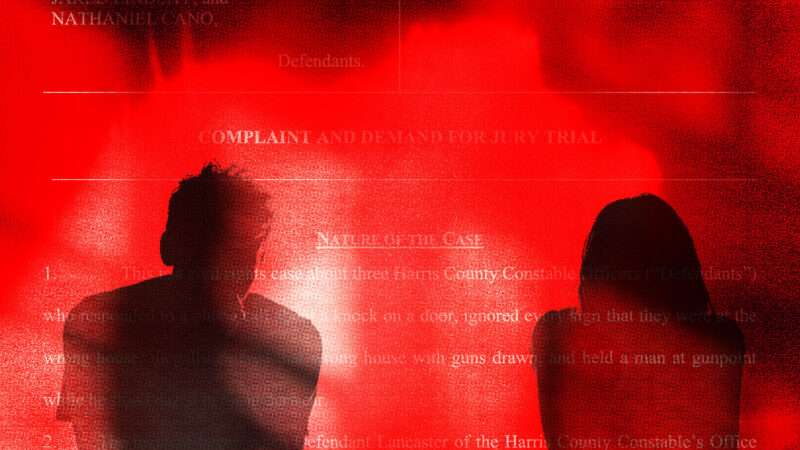Five and a half months ago, in August 2023, our article on Section Three of the Fourteenth Amendment, The Sweep and Force of Section Three, was accepted for publication by the University of Pennsylvania Law Review.
The article’s core thesis – that Section Three’s disqualification of insurrectionists from office is legally operative, self-executing, sweeping in scope, and likely disqualifies numerous participants in the efforts to overturn the 2020 presidential election – obviously has enormous implications for our national political life today. Among other important consequences, it means that former president Donald J. Trump, who is running for president again in 2024, is constitutionally disqualified from holding that or any other covered office, unless and until two-thirds of both houses of Congress vote to remove his disqualification.
Shortly after being accepted for publication, we posted the draft manuscript of the article on the Social Sciences Research Network (SSRN). The article (and its thesis) immediately attracted wide interest: For an academic article, The Sweep and Force of Section Three has provoked an unusual amount of interest and attention. It has been widely discussed on air, in print, online, and in the academy. And it has been widely cited in the current litigation about the enforcement of Section Three. As readers surely know, the Colorado Supreme Court held that Mr. Trump is indeed disqualified by Section Three from future office as a matter of federal constitutional law; and that this renders him ineligible for inclusion on the state primary ballot for election to that office as a matter of Colorado state law. The U.S. Supreme Court has granted certiorari to review that decision in what is sure to be one of its most important cases of the term.
For the most part, we have been content to let the analysis and arguments of The Sweep and Force of Section Three speak for themselves and have not participated in the subsequent public debate and litigation over its thesis. The manuscript itself is quite detailed – it runs 126 pages in its pre-publication form – and frankly it anticipates many of the objections that have been raised against its legal conclusions. Up until now, we have not elsewhere responded to these objections in print, at least not systematically.
But the occasion of the Colorado Supreme Court’s decision in Anderson v. Griswold, and the Supreme Court’s pending review of that decision in Trump v. Anderson, provides, we think, an appropriate occasion for us to address some of the arguments that have been made about Section Three. As noted, we discuss some, even many, of these points in our original article. The article is now in the final stages of editing with the excellent staff of the University of Pennsylvania Law Review. In the editing process, we decided against burdening the article’s discussion with many responses to specific objections that have been made to its thesis, as those objections have arisen in public debate over the last four months, for two reasons: First, the version from last fall, as edited, largely stands on its own and has already been read by many in that form, which would makes it somewhat awkward (and perhaps irritating to some readers) to revise that text significantly to respond to assertions or critiques offered since September. Second, and relatedly, responding on the fly in the main text to objections as they arose would have made the article something of a moving target, and perhaps further delayed publication.
We adhere to all the points we made in that manuscript and have changed little. Nothing in the ensuing commentary, discussion, and litigation has caused us to revise our core propositions:
- that, as a matter of the original public meaning of the text, the structure, and the history of the Constitution – our methodology for interpreting and applying the Constitution – Section Three of the Fourteenth Amendment remains legally operative and in force;
- that it directly enacts a specific and discernable set of constitutional rules of disqualification of prospective officeholders and requires no further action or legislation in order to have immediate and binding legal effect;
- that the rules enacted by Section Three are binding on all officials of government whose duties are affected by those rules (including state and federal officials, legislatures, and state and federal courts);
- that Section Three supersedes or qualifies (or satisfies) prior constitutional rules to the extent of any conflict between them;
- that Section Three enacts a set of sweeping but readily ascertainable set of rules of constitutional disqualification from office, defined by the meaning of specific constitutional language that should be understood and applied in its original sense, in context;
- that those rules apply to persons who have held or who now seek the office of President of the United States;
- and that the operation of those rules renders Donald Trump constitutionally ineligible for the office of President or any other.
Because of the fast timetable for the Supreme Court’s consideration of Trump v. Anderson, we have chosen to address in a short series of blog post/essays a few points in response to the ongoing Section Three debate – points that we might otherwise have reserved for a later law review essay. We will address certain discrete arguments that have been raised, elaborating where necessary on points we make in The Sweep and Force of Section Three, responding to certain discrete points of contention, clarifying points of possible confusion, and parrying objections we could not fully have anticipated but that we think badly flawed (or simply very odd – which might in part explain why we did not anticipate them). We will also address a few general points that have arisen in connection with the U.S. Supreme Court’s consideration of the issues presented in the Trump v. Anderson case. Finally, we will point out minor respects in which we have modified, or qualified, positions taken in our article, The Sweep and Force of Section Three, in the course of editing and consideration of further comments. We may collect and revise them into a more final form when they are complete.
Our goal is for each blog post/essay to address a single specific point or theme unburdened by extensive footnotes. For example, we will soon discuss the objection that applying Section Three would be “undemocratic.” Another may take on the argument, offered by some, that we should decline to enforce and apply Section Three because complying with the Constitution in this regard would be politically disruptive and perhaps dangerous. Another may examine arguments that Section Three issues are “political questions” that courts should refuse to decide as a matter of constitutional law. Another may look at the way “constitutional legislative history” has been used, and in some instances severely misused, in debating the meaning of Section Three. Another may examine further the assertion (already addressed in our main article) that Section Three does not apply to Donald Trump because he was not, as President, “an officer of the United States” and because the Presidency, the office he seeks again, is not an “office under the United States.” Another may examine the suggestion that even if Trump is constitutionally disqualified from being President of the United States, that does not mean he is constitutionally ineligible to be elected as President of the United States. And so on. (We make no promises at this point.)
This introductory essay reflects a broader theme to the anticipated series, reflected in the title of this post: “Fighting the Meaning of Section Three.” While we do not in any way doubt the good faith of our many critics, it seems to us that many of the objections and arguments raised against our thesis do not join issue with the legal arguments from text, history and structure. Some are political objections to complying with and carrying into effect the constitutional rules set forth in Section Three, even assuming our analysis is correct. (Or, what is much the same thing, they use burdens of proof or presumptions to override what would otherwise be the correct understanding of Section Three, for essentially political reasons.) Such arguments resist our claims about the meaning of Section Three, but they do not refute it. Others have sought to develop escape hatches, or loopholes, or (in one common expression) “off ramps” to avoid the legal conclusions set forth in our article. Still other objections wrestle forthrightly with the legal analysis of our article on conventional legal terms, but they are ultimately unavailing. Each of these classes of objections is “fighting” the meaning of Section Three in a different sense, but all of them are wrong.
As Gerard Magliocca recently observed, judges often use the phrase “the opinion won’t write,” to “describe the following situation: Their instinct is to decide a case in a particular way. But when they sit down to write the opinion, they find that they can’t logically reach that result. This forces them to reconsider their initial conclusion.” He further observes: “In a nutshell, this is what is happening with the Trump case. The instincts go one way and the law goes the other way. The more you look at the legal arguments, the less sure you are that Trump is eligible.” This, we think, is the same process we are witnessing with those who are fighting the meaning of Section Three. At some point, it is time to conclude that one is fighting for the wrong side.
Enough said for now. In the next essay, we begin with the question of whether applying Section Three’s disqualification to disqualify a presidential candidate is “undemocratic” in any constitutionally relevant sense.
The post Fighting the Meaning of Section Three appeared first on Reason.com.
from Latest https://ift.tt/aKZTsOf
via IFTTT




